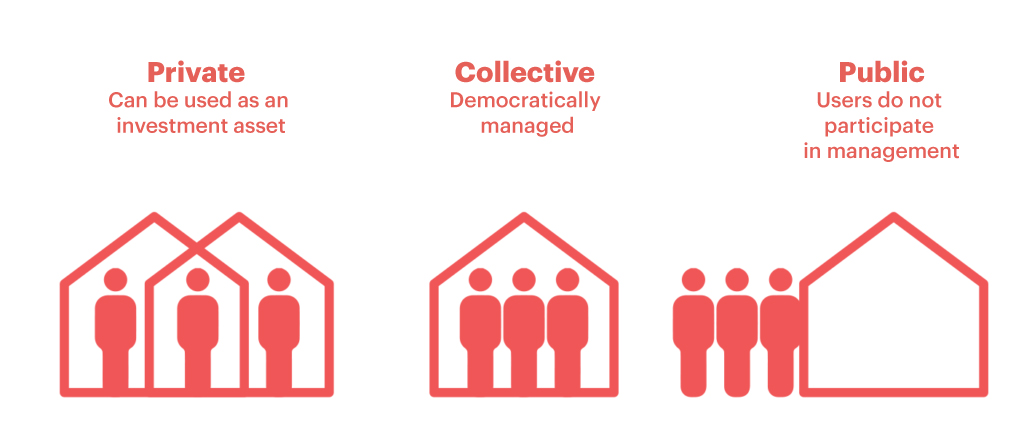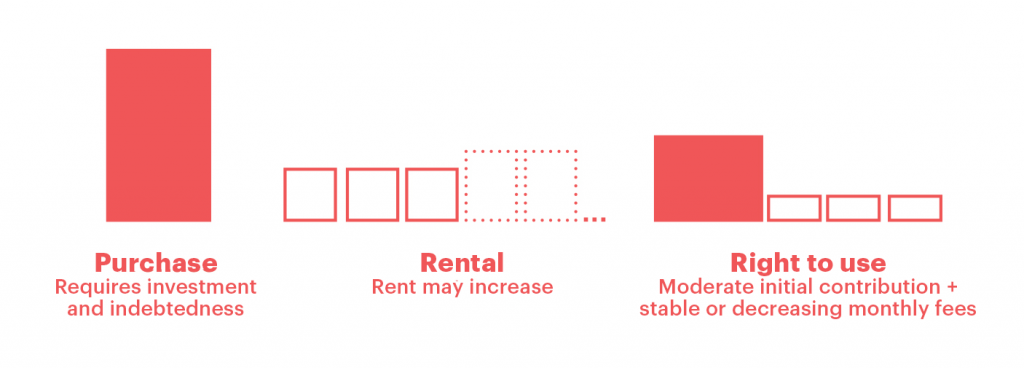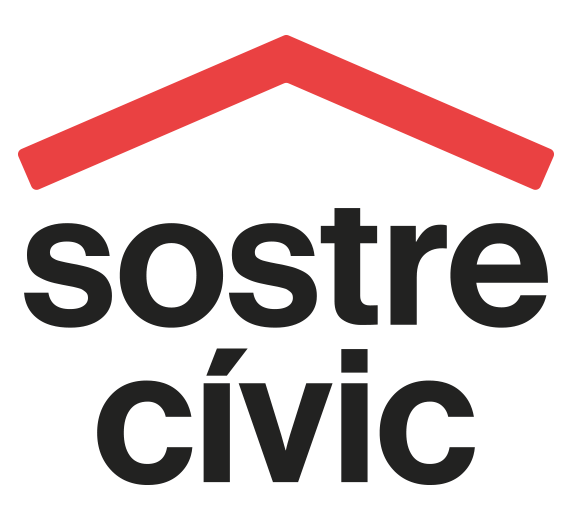These characteristics are linked to social interest. Since cooperatives are essentially non-profit making, it is the residents themselves who are the owners. At the same time, they integrate a public and private initiative in a non-speculative market.
COLLECTIVE OWNERSHIP
The cooperative is always the owner of the dwellings and, unlike the traditional cooperative housing model, it keeps the collective property
beyond the development phase and contemplates a communal living.
It is not possible, therefore, to transform the model to obtain privately-owned housing. Collective ownership avoids speculation, as it makes it impossible for individuals to make a profit from renting or selling their homes. At the same time, it allows and encourages the participation of cooperative members, who are also owners, which does not happen in the state-owned social housing.

In a cooperative for the transfer of use, all residents are part of a democratic and participatory organization
RIGHT TO USE
Sostre Cívic assigns and grants the right to use of the dwellings to the members that will live there. These members make an initial contribution (returnable in case the person stops living in the dwelling) and pays a monthly fee, similar to rent. These fees are directly related to the cost of acquisition, maintenance and functioning of the cooperative housing project, and have nothing to do with the situation in the real estate market. Thus, dwellings are generated below market prices.

Since the right to use is granted for an indefinite period of time, the members of the cooperative can live on for life. This allows them to have a stable home where they can develop their own life project with links to the territory.
In projects where the ownership of the land or building does not belong to the cooperative, the right to use period can be limited. This is the case for the projects developed in state-owned plots of land, where the right to use period is 75 years.
 Facebook
Facebook Youtube
Youtube Instagram
Instagram


